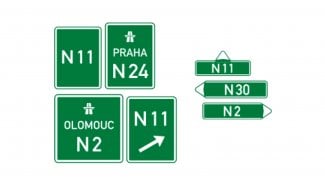cunmbr
NAME
CUNMBR - VECT = 'Q', CUNMBR overwrites the general complex M-by-N matrix C with SIDE = 'L' SIDE = 'R' TRANS = 'N'
SYNOPSIS
SUBROUTINE CUNMBR(
VECT, SIDE, TRANS, M, N, K, A, LDA, TAU, C,
LDC, WORK, LWORK, INFO )
CHARACTER
SIDE, TRANS, VECT
INTEGER
INFO, K, LDA, LDC, LWORK, M, N
COMPLEX
A( LDA, * ), C( LDC, * ), TAU( * ),
WORK( * )
PURPOSE
If VECT = 'Q', CUNMBR overwrites the general complex M-by-N matrix C with SIDE = 'L' SIDE = 'R' TRANS = 'N': Q * C C * Q TRANS = 'C': Q**H * C C * Q**H
If VECT = 'P', CUNMBR overwrites the general complex M-by-N matrix C with
SIDE = 'L' SIDE = 'R'
TRANS = 'N': P * C C * P
TRANS = 'C': P**H * C C * P**H
Here Q and P**H are the unitary matrices determined by CGEBRD when reducing a complex matrix A to bidiagonal form: A = Q * B * P**H. Q and P**H are defined as products of elementary reflectors H(i) and G(i) respectively.
Let nq = m if SIDE = 'L' and nq = n if SIDE = 'R'. Thus nq is the order of the unitary matrix Q or P**H that is applied.
If VECT = 'Q', A is assumed to have been an NQ-by-K matrix: if nq >= k, Q = H(1) H(2) . . . H(k);
if nq < k, Q = H(1) H(2) . . . H(nq-1).
If VECT = 'P', A is assumed to have been a K-by-NQ matrix: if k < nq, P = G(1) G(2) . . . G(k);
if k >= nq, P = G(1) G(2) . . . G(nq-1).
If VECT = 'P', CUNMBR overwrites the general complex M-by-N matrix C with
SIDE = 'L' SIDE = 'R'
TRANS = 'N': P * C C * P
TRANS = 'C': P**H * C C * P**H
Here Q and P**H are the unitary matrices determined by CGEBRD when reducing a complex matrix A to bidiagonal form: A = Q * B * P**H. Q and P**H are defined as products of elementary reflectors H(i) and G(i) respectively.
Let nq = m if SIDE = 'L' and nq = n if SIDE = 'R'. Thus nq is the order of the unitary matrix Q or P**H that is applied.
If VECT = 'Q', A is assumed to have been an NQ-by-K matrix: if nq >= k, Q = H(1) H(2) . . . H(k);
if nq < k, Q = H(1) H(2) . . . H(nq-1).
If VECT = 'P', A is assumed to have been a K-by-NQ matrix: if k < nq, P = G(1) G(2) . . . G(k);
if k >= nq, P = G(1) G(2) . . . G(nq-1).
ARGUMENTS
VECT (input) CHARACTER*1
= 'Q': apply Q or Q**H;
= 'P': apply P or P**H.
= 'P': apply P or P**H.
SIDE (input) CHARACTER*1
= 'L': apply Q, Q**H, P or P**H from the Left;
= 'R': apply Q, Q**H, P or P**H from the Right.
= 'L': apply Q, Q**H, P or P**H from the Left;
= 'R': apply Q, Q**H, P or P**H from the Right.
TRANS (input) CHARACTER*1
= 'N': No transpose, apply Q or P;
= 'C': Conjugate transpose, apply Q**H or P**H.
= 'N': No transpose, apply Q or P;
= 'C': Conjugate transpose, apply Q**H or P**H.
M (input) INTEGER
The number of rows of the matrix C. M >= 0.
N (input) INTEGER
The number of columns of the matrix C. N >= 0.
K (input) INTEGER
If VECT = 'Q', the number of columns in the original
matrix reduced by CGEBRD.
If VECT = 'P', the number of rows in the original
matrix reduced by CGEBRD.
K >= 0.
A (input) COMPLEX array, dimension
(LDA,min(nq,K)) if VECT = 'Q'
(LDA,nq) if VECT = 'P'
The vectors which define the elementary reflectors H(i) and
G(i), whose products determine the matrices Q and P, as
returned by CGEBRD.
LDA (input) INTEGER
The leading dimension of the array A.
If VECT = 'Q', LDA >= max(1,nq);
if VECT = 'P', LDA >= max(1,min(nq,K)).
TAU (input) COMPLEX array, dimension (min(nq,K))
TAU(i) must contain the scalar factor of the elementary
reflector H(i) or G(i) which determines Q or P, as returned
by CGEBRD in the array argument TAUQ or TAUP.
C (input/output) COMPLEX array, dimension (LDC,N)
On entry, the M-by-N matrix C.
On exit, C is overwritten by Q*C or Q**H*C or C*Q**H or C*Q
or P*C or P**H*C or C*P or C*P**H.
LDC (input) INTEGER
The leading dimension of the array C. LDC >= max(1,M).
WORK (workspace/output) COMPLEX array, dimension (LWORK)
On exit, if INFO = 0, WORK(1) returns the optimal LWORK.
LWORK (input) INTEGER
The dimension of the array WORK.
If SIDE = 'L', LWORK >= max(1,N);
if SIDE = 'R', LWORK >= max(1,M).
For optimum performance LWORK >= N*NB if SIDE = 'L', and
LWORK >= M*NB if SIDE = 'R', where NB is the optimal
blocksize.
If LWORK = -1, then a workspace query is assumed; the routine
only calculates the optimal size of the WORK array, returns
this value as the first entry of the WORK array, and no error
message related to LWORK is issued by XERBLA.
INFO (output) INTEGER
= 0: successful exit
< 0: if INFO = -i, the i-th argument had an illegal value
< 0: if INFO = -i, the i-th argument had an illegal value




















